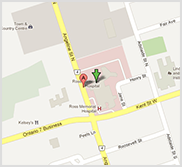MRI Safety
You may not have an MRI if you have:
- a cardiac pacemaker
- an implanted cardiac defibrillator
- a neurostimulator
- any type of implanted biostimulator
- any type of internal electrode(s), including pacing wires and cochlear implants
- an implanted insulin pump
- a Swan-Ganz catheter
- any type of electronic, mechanical or magnetic implant
- an implanted drug infusion device
- a metallic foreign body in the eye (if suspected, please have plain orbit X-rays taken prior to the procedure)
- any type of intravascular coil, filter, stent (some are compatible, check with MRI bookings)
- ear implants (some are compatible, check with MRI bookings)
- aneurysm clips (some are compatible, please submit operative notes)
- shrapnel or bullets (may not be contraindicated, check with MRI bookings)
Objects or Devices that are MRI safe:
- (Although these items are compatible, they can cause severe distortions on the images in the area of the implant.)
- surgical clips - time frame six weeks post-op
- staples - ideally removed
- vascular access ports
- intraventricular shunt
- HALO vest
- diaphragm/IUD/pessary
- penile prosthesis (most are compatible, check with MRI bookings)
- wire mesh
- any implanted orthopedic items (such as pins, rods, screws, nails, clips, plates, wires, etc)
- heart valve prosthesis (most are compatible, check with MRI bookings)
Items that would need to be removed before an MRI:
- hearing aids
- purses/wallets
- eye prosthesis
- coins
- any implant held in by a magnet
- trans-dermal medication patches
- prosthetic limb
- metal zippers
- hair pins/clips
- jewelry/eye glasses
- wigs
- dentures
- credit cards, bank cards and anything else with a magnetic encoding (will be erased by the magnet)
- metallic objects from your pockets
Any metallic object can become a projectile within a magnetic field, posing a serious risk of injury to the patient and the technologists. To prevent any possible injuries we ask that all patients change into a hospital gown and place all belongings and valuables in a locker. The key can accompany the patient into the room.
@RossMemorialHospital
Follow us and stay up to date on news, events and health related issues:


